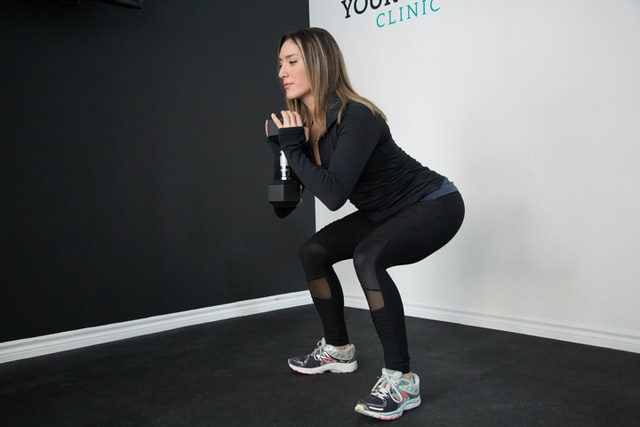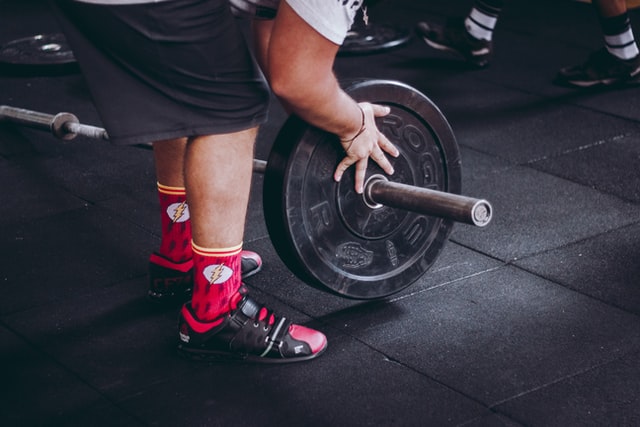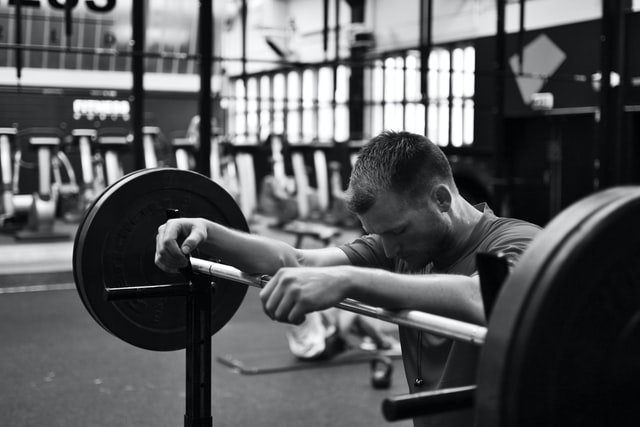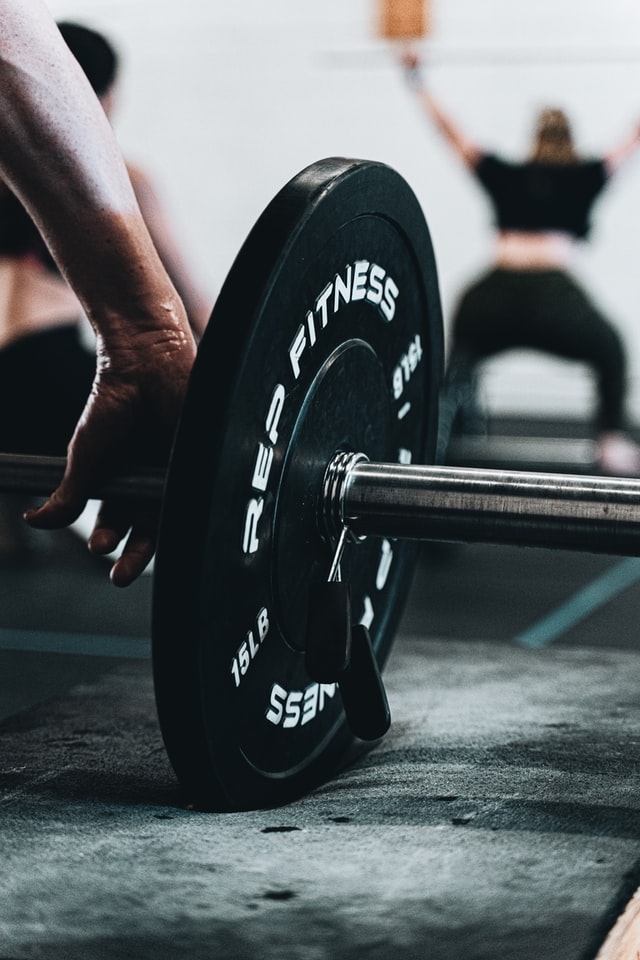THE CLUSTER TRAINING, studies carried out AND ITS PROBLEMS
The greater or lesser amplitude of the recovery time between repetitions and series is what is known as cluster training or CLT.
In this series of articles we deal with some of the most important concepts of strength training, collecting notes from the recently published book Strength, Speed and Physical and Sports Performance written by renowned researchers Juan José González Badillo and Juan Ribas Serna.
SUMMARY
- Cluster training refers to the modification of recovery times in repetitions and series of a workout.
- It is mistakenly thought that using cluster training, more power is developed than with traditional training.
- The benefits of metabolic stress related to short recovery times (30 seconds or less), high or medium number of repetitions per series, and very high character of effort (EC), do not allow sufficient recovery of muscle strength between series, which it can compromise the ability to apply force on subsequent sets.
- The strength-enhancing benefits appear to be directly related to the recovery time between sets, so a 3-minute recovery rest between sets is recommended.
At least since the 1990s (Rooney et al., 1994), although still without using the term “cluster”, which appears a decade later, they began to study the effect that the introduction of a certain pause between the repetitions of each could have. series compared to no recovery within series. The aforementioned study by Rooney et al. It was carried out in order to “learn the role of fatigue in the series”.
Just taking the objective of the study as a reference, two ideas can already be obtained that can be useful for understanding training as a general concept, not just as a “cluster”. The first is that the studies must be defined, fundamentally, by their objectives and variables, not by misleading names, which do not provide the necessary information to understand what has been done or the conclusions of the study. The title of the study by Rooney et al. (1994), in which no terminology was introduced that could lead to confusion, was: “Fatigue contributes to the strength training stimulus”,

The second idea is that, without the need to carry out any study, it is already known that given the same relative intensity and the same number of repetitions in the series, not pausing between repetitions causes greater fatigue than when the series is completed with some pause for recovery between repetitions.
In this case, we start from the premise that not taking breaks in the series will lead to greater fatigue, since otherwise the objective would not have been to verify “its role” as a component of the stimulus that improves strength.
Not taking rep breaks in the set leads to increased fatigue
Well, regarding the first idea, since the beginning of this century numerous versions have been appearing about the introduction of a pause between repetitions and within a series. This has been called “cluster training” (CLT), moreover, in English for everyone. The term “cluster” would have to be translated by something like “group” or “grouping” and we would be left with “training by groups or by grouping”. Having to warn that what is grouped or divided into groups is the number of total repetitions that are planned to be done in a series.
Although one could also speak of “ungrouping”, since the repetitions that make up a series are already “grouped” in a single group, in such a way that the set of all the “groups” of repetitions constitutes the training session.
So the grouping thing is still somewhat confusing. The most common is that in the CLT these groups are of one repetition, although for “testing”, the groups could be of all the repetitions that the grouper can think of. A typical expression of this “new terminology” is that of “cluster set” (CS). With this term it seems that the question is somewhat clarified, and the accent is placed on the fact that the “cluster” is made in the series or with each series.

To make it clearer, training without pauses between the repetitions of a series will be called “traditional training” (ET), by calling it something, as opposed to CLT. If, as seems logical, the objective of applying the CLT is to check whether or not it is more favorable than the ET, the possibility of applying different values or levels of the independent variables such as “recovery time between repetitions”, “intensity in each series ”, the “number of repetitions per set” and “recovery time between sets” is very broad.
Only considering these four variables and the 6-7 levels, as a minimum, that could be applied to each one, so many load alternatives can be given that it would be inappropriate to say that, according to the result of a specific study or design, the CLT is better or worse than the ET. Naturally, if these levels of the variables are well defined, it will be possible to progress little by little and find that in some situations one is better and in others another, and also that one is more favorable for some objectives and the other for others.
As for the objective, the most important is to check what effect each of them has on performance at other speeds, since performance is measured by the change in speed at each load, although unfortunately, this is not what has been studied. until now.
Apart from the possible variables previously described, there is one that nullifies the possibility of comparing both types of training. This is the recovery time between sets. If, in addition to applying recovery times between repetitions, recovery time between series is also modified, we are introducing a new independent variable that prevents us from considering that the effects of both training sessions are exclusively due to the variable “recovery time between repetitions”, which is what defines, properly, the training type CLT.

What is done in these cases is to reduce the recovery time between series in the CLT with respect to that applied in the ET, so that the total training time is the same for both types of training. If this is done in this way, apart from the fact that the recovery effect between repetitions is no longer being compared, the “supposed advantage” of the CLT is lost, which is to perform all repetitions with less fatigue.
The problem is that this advantage is largely negated if the recovery between sets is reduced, thus contributing to the overall fatigue of the CLT training session. Therefore, this is one of the frequent serious errors of this type of design: looking for an apparent equalization or control of a variable (time that the session lasts), a contaminating variable is introduced in an attempt to verify if the rest between repetitions is better. or worse than not resting.
What is done in these cases is to reduce the recovery time between series in the CLT with respect to that applied in the ET, so that the total training time is the same for both types of training.
As in most of the designs, the training is carried out with the typical XRM, sometimes another important mistake is made, such as increasing the number of repetitions in the series, since it is normal that with the recoveries between repetitions more repetitions can be done with the same relative intensity (the “same intensity” is theoretical, since in practice this is unlikely to be achieved), which would lead to the realization of a greater volume, which is sometimes considered as “something positive for improvement” of maximum force.
This, once again, introduces one more polluting variable, since it is no longer the “cluster” that is being studied, but rather the effect may also be conditioned by a greater number of total repetitions, a variable that may have a positive or negative influence. negative, in the result.
However, this is justified by arguing that by doing more repetitions (more volume) it is possible to achieve a greater stimulus that produces a greater improvement in “maximal strength” and hypertrophy, without considering then that the “cluster” is not really being compared. , but the greater or lesser volume and therefore, the direct effect of the recovery between repetitions is not contrasted.

Another alternative that is usually proposed in this sense is that since resting between repetitions can do a greater number of repetitions in the series, with the CLT a higher relative intensity could be used to do the same repetitions as the ET group. Here we run into two problems.
The first is that we are not comparing: the effects of the recovery time between repetitions, but the relative intensity of the training, since the intensity would be different for both groups. And the second has to do with the “intuition” that someone has to know what is the absolute load that should be added to each subject so that with the same higher relative intensity for all subjects and a certain recovery time (also variable, according to the design), the subject did exactly the same repetitions that another subject with a lower relative intensity does. And all this without taking into account, in addition, that each subject can do a different number of repetitions with the same relative intensity (González-Badil al., 2017).
In short, something practically impossible to design and carry out. However, everything is generally considered as something that “… would be very beneficial because it would provide a greater stimulus for the improvement of hypertrophy (which is not lacking) and maximum strength.” A typical misinterpretation, and often justifiable, of the CLT is that applying it improves the “power” more than with the ET.
This should not even be discussed, because by definition of the terms of “force” and “power”, the proposal is impossible. It is even proposed that with the ET the “maximal strength” was improved more (generally 1RM, as usual) but with the CLT the power improved more. The analysis is erroneous because in the best of cases for the CLT, it could be said that under light loads the CLT improved more than the ET, but that under high loads the ET improved more.
A typical misinterpretation of cluster training is that by applying it you can improve “power” more than with traditional training.
This would have a possible explanation: if we start with the same number of repetitions per series for both groups, and the ET group reaches muscular failure, as usual, less fatigue would be generated with the CLT and a higher average speed would be reached. in the set of repetitions, so it would be more probable, in the best of cases, that in the CLT there is a tendency to improve more with light loads, of greater speed than with the ET.
But if we take into account the relationship between strength and speed and power, this would necessarily mean that ET would improve power more when faced with loads in which strength has improved more, and that CLT, which supposedly has improved more power, it would only improve more before those loads in which the strength had improved more than the ET.

But the problem —one more— is that the training effect is measured very poorly: what they usually call “maximal force” is measured exclusively with MRI, and what they usually call “power” is measured only with a load that, supposedly , is the one with which more power is generated. Naturally, the proper approach—and solution—to this problem is to measure the effect of training with a wide range of absolute loads (which would represent the same number of relative loads) that can be moved from high speeds to moderate or low speeds, although never reaching RM (minimum speed for an exercise).
In this way, we would have information on the effect of training on a wide range of the force-velocity-power curves, although the information on power when external loads are moved has no application, because all the information that power could provide already comes explained by speed, and with greater precision, ease and economy of means.
Studies analyzed on cluster training (clt)
Rooney el al. (1994)
In the study by Rooney et al. (1994), although the term “cluster” was not used, a design was carried out that was adjusted to what was later called CLT. We wanted to verify the effect of fatigue on strength performance. For fatigue to be the true independent variable, the training was organized with the same intensity and volume (6RM with several series), but one group performed all the repetitions without rest between repetitions and the other group rested 30 seconds between repetitions.
In a parallel study with a part of the sample, it was found that the group that did not recover between repetitions fatigued more than the group that did recover. The subjects were resistance-trained individuals and the exercise performed was elbow flexion. The results indicated that the group that did not recover between repetitions improved strength (1RM) significantly more (+56.3%) than the group that recovered (+41.2%). The conclusion of this study was that the processes associated with fatigue contribute to creating the stimulus through which training leads to further improvement in strength.
it was verified that the group that did not recover between repetitions of the series fatigued more than the one that did recover.
Based on these results, one might be tempted to think that the greater the fatigue, the better the outcome. But this is neither reasonable nor real, so for an interpretation of the results we should add that within the maximum fatigue value reached in this study, strength tends to improve more significantly than if, given the same intensity and volume, Fatigue is reduced by introducing a 30 second rest between repetitions. Therefore, it seems that 30 seconds of recoveries between repetitions, given the intensity and volume used in this study, is not the best stimulus to improve RM.

Therefore, it could be deduced that a recovery time of 30 seconds is too long, and therefore that it is not part of the best stimulus to improve strength, that is, that it does not generate the degree of fatigue that provides the best effect.
It would then remain to be verified what happens with other lower recovery times, since if they are greater than 30 seconds, it is reasonable to admit that the results would tend to be less.
Unfortunately, this study was conducted with sets to failure in the group without recovery between repetitions. There will always be a question about what would have happened if the least fatigue —because it is what is sought with the CLT— had been achieved by doing fewer repetitions in the series with the same relative intensity, and not by resting between repetitions.
According to Lawton et al. (2004)
In the study by Lawton et al. (2004), according to the authors, the objective was to analyze the effect of performing all repetitions continuously (ET) in the series versus recoveries within the series (CLT) in the bench press exercise.
Although it was not really what was done, since the CLT group reduced the rest between series to equalize the total execution of each session with respect to the ET. The recovery time between repetitions and between series is not indicated in the document, but only the total duration of the sessions.
It is assumed that an adjustment was made to the CLT times to match the ET(?) times. The study was carried out for 6 weeks with 26 junior soccer and basketball players. The 6RM and the power in the launch of 20, 30 and 40 kg were measured. The intensity ranged between 80 and 105% of the 6RM, with 4 series of 6 repetitions for the ET group and 8 series of 3 repetitions for the CLT. The total work time in the concentric phase of the exercise was slightly higher in the ET group than for the CLT, indicating a slightly higher mean speed of execution in the CLT.

The ET group improved the 6RM significantly more (9.7%) than the CLT group (4.9%), but the improvements in throw power (between 5.8 and 10.9%) were equivalent in the two groups. The conclusion was that ET (continuous repetitions) improves strength (and hence 6RM) more than CLT, but both improve power in throwing loads of 20, 30 and 40 kg to the same extent.
This is one of the studies in which the existence of one of the previously mentioned errors is verified: the reduction in recovery time between series. The goal and reason for doing the CLT is to be able to do all the repetitions with less fatigue, that is, at a higher average speed (or more “power”, for most) for the same number of repetitions.
Therefore, in this case it cannot be said that doing all the repetitions without pausing between them is better than doing them with a pause, since the less fatigue that was reached in the first series of 3 repetitions was partly canceled out by the lesser recovery between each repetition. series of 3 repetitions.
That is to say, in order to be able to affirm what is concluded in this study, 2 series of 3 repetitions should have been done, with a first determined recovery between them, which would be equivalent to a series of 6 repetitions of the ET group. At this point, the same recovery should have been done between the second and third series that ET carried out between his series, and then the remaining 6 series should be done with the same protocol.
In this way, it could be affirmed that the ET was superior to the CLT. Regarding the equivalence in the improvements of the launch power, we are left with doubts about the way to measure the power (with a 100 HZ encoder of measurement frequency), although it is also possible that these results are due to to the fact that the CLT performed the movements at a mean speed slightly higher than that of the ET group, which could have benefited the speed of execution under light loads, even though the 6RM improved less.
Naturally, also present in this study and in all the ones we will see, is the fact that the training effect is poorly measured: only with a magnitude of load.
Hansen et al. (2011)
The aim of Hansen et al. (2011) was to test whether CLT training improved jumping power of elite category rugby players.
The 18 players were divided into two groups of 9 subjects, who carried out the ET and the CLT. Before and after the 8-week training period, with 2 sessions per week, together with the rest of the rugby-specific training, the force-speed-power profile in the loaded jump (JS) and the “maximal force” were measured. (estimated 1RM) in the squat with the bar behind the head, but to a “visually high” angle of 90 degrees.
The intensity in the squat exercises (front and back) ranged between 80 and 95% in each session, and from 8 to 3-4 repetitions per set, which were 5 per session. That is, the training was practically with XRM (although 3 reps with 95% is not likely to be done).

Two-stroke jerks and power cleans were also done with similar intensities. Recovery time between sets was 3 minutes. CLT training was done with the same volume (sets x repetitions x loads). The recovery time between repetitions was 20-30 seconds, with an unstable distribution (?), difficult to explain, but this recovery time between repetitions was subtracted from the recovery time between sets to equalize the session times.
Both groups improved squat strength, but the ET group improved significantly more (18.3%) than the CLT group (14.6%). Neither of the two groups improved significantly in the variables measured in the jump exercises with loads (peak power, speed and force).
The results of this study confirm what was found in the previous one. The same design error is made, which does not allow a proper comparison of the effect of the CLT, the “maximum force” improves more in the group that does the ET and there are neither improvements within the groups nor differences between them in the performance indicators at high speeds (jumps). Therefore, all the comments on the previous study would be applicable in this case. However, the authors indicate that “evidence was given to support the possible benefit of the application of the CLT for the development of the power of the lower limbs, and that it should be preferable to the ET”.
It is surprising that it is considered reasonable to recommend the CLT without having found any positive effect with its application with respect to itself (intra effect) in “potency” (which seems to be the “preferred effect” by the researchers), and with less effect on the ” maximum force” than with ET. It seems that the justification for this conclusion is that “if our hypothesis is not confirmed now, it will be confirmed another time… But we continue to maintain it, …and that is why we recommend the CLT for everyone”.
In Gonzalez-Badillo’s opinion, the scant effect on jumping performance may be due, fundamentally, to the excessive load and fatigue generated by the so-called strength training with the squat exercises. In addition, all the repetitions were done at a low and very low speed, given that, on the one hand, the intensities were high or very high (from 80 to 90-95% of the RM), which means that the first repetition already it is done at a low speed, and also, it was reduced until it reached the minimum possible for the subject in the exercise.
High fatigue and low average speed are probably the two elements that can have the most negative effect on performing actions at high speed. The lower effect of the CLT group could hardly be explained by the lower fatigue generated, rather it is possible that the lower recovery between series generated as much or more fatigue than with ET.
Oliver et al. (2013)
The objective of the study by Oliver et al. (2013) was to determine if hypertrophy training with recovery within the series produces greater gains in strength and power compared to hypertrophy training than traditional training.
In the ET the number of repetitions per series was double (10) than with the CLT (5) and a recovery was made between series of 2 minutes, which is also double that applied in the CLT (1 minute of recovery between series). The ET group did 4 sets of 10 reps with 2 minute recovery between sets and the CLT did 8 sets of 5 reps with 1 minute recovery between sets. It is specified that all the repellers had to be carried out “explosively”, that is, at the maximum possible speed. The total execution time of the session was equivalent for both groups.

The training was carried out for 12 weeks, in three blocks of 4 weeks in which training was carried out 4 times a week in the first 3 weeks of each block and twice in the fourth week, although the exercises evaluated in the study (the bench press and squat) only trained 2 times a week each. Every 4 weeks a new MRI test was done to adjust the loads. The participants were 22 young subjects with experience in resistance training.
The big difference between this study and most, including those discussed so far, is that, in each 4-week block, the relative intensities were: 65, 70.75 and 60% of the RM, in this order, in such a way that the ET group only in 6 sessions of the 42 performed was close to or reached the maximum possible number of repetitions in the series in the bench press and squat exercises (up to parallel). This occurred when he trained with 75% and 10 reps to go. In the rest, the number of repetitions performed was on average between 2 and 7 repetitions below the possible repetitions, on average, in the series. Another important difference is that the recovery time between sets in the CLT group was 1 minute, versus 2 minutes in the ET.
Both groups significantly improved bench press and squat strength and power and jumping power, but in this case, the CLT improved more in bench press and jumping power and bench press and squat strength compared to ET.
The power was measured with the load of 60% of the RM in both exercises, when it does not seem that the maximum power is reached with the same percentage in all the exercises (González-Badillo, 2000). It really should have been said that “the load that represented 60% of the RM improved the most”, since, if they measured that 60% correctly, the speed should have been practically the same before and after training in each exercise, and therefore, the change in power would be directly due to the change in absolute load used, not to the change in speed with said load, and, therefore, to the change in the force applied before a determined absolute load, which in this case represented 60% of the MRI.
That is, it would have improved power by increasing the mechanical work done, not by reducing run time. In short, what they really did was measure the change in force (load) at the same percentage of the RM, or at the same speed, but, as usual, it seems that if it is said that what improved was the power, the effect seems to be better or more interesting.
This design also does not allow us to state whether one form of training or another is better, since the recovery after the same number of repetitions, which in this case would be the 10 performed by the ET group in a series, was not the same. But, in Gonzalez-Badillo’s opinion, the possible explanation for these results, which are partly opposed, especially in strength, to those we have seen in other studies, could lie in the little fatigue that the CLT group has endured.
This is due to two reasons. On the one hand, because in each series this group was very far from the possible repetitions in the series, reaching a maximum of half of those possible, and this was only in six sessions during a period of 12 weeks of training, when 75% of the RM was made.

Secondly, because the recovery time between groups of repetitions has been 1 minute, clearly higher than usual and than applied in previous studies. This means that after doing a number of repetitions in the series equivalent to, at most, 50% of those possible, the loss of speed in the series has been approximately 20% in the squat and 25% in the bench press. , and minor losses in the rest of the sessions, which means having reached a degree of fatigue very close to the one that has been shown to offer the best results in both exercises for ranges of intensities between 55 and 85% of the RM (Couple -Blanco et al., 2017; Rodríguez-Rosell, Doctoral Thesis).
This means that, in this case, the recovery time between groups of repetitions could have been sufficient so that fatigue, which would naturally tend to be greater as more sets of 5 repetitions are performed, has not even been equivalent to the reached by the TE group, especially in the 6 sessions of each exercise in which muscular failure was reached. From the characteristics of all these load indicators, it can be deduced that the average speed with which the CLT group executed all the repetitions must have been clearly higher than those of the ET group, which may also have a relevant relationship with the training effect. , especially in actions that are executed at high speed.
The title of this study indicates that the effect on strength and power of hypertrophy training is to be verified. It really is strange, because the characteristics of the applied training do not seem to be specific for the development of hypertrophy.
In this sense, the two groups improved the volume of lean mass, with no differences between them. In both groups there was a decrease in the percentage of type IIX fibers and an increase in IAI, with no significant differences between groups. In other words, it does not seem likely that these structural changes have had a different appreciable influence in each group in terms of the effects on performance in the exercises under study.
In short, it is likely that the factors that most influence these results are the degree of fatigue generated (loss of speed in the series) and the average speed of execution in all the repetitions.
As indicated, one of the typical reasons for using CLT type training is the less fatigue that doing the same number of repetitions with rests between repetitions in a series means doing them continuously.
This, as discussed at the beginning of this article, raises the issue of whether or not recovery time is positive for performance improvement. In addition, this question can have many different answers if we take into account that it has not always been proposed to recover between repetitions, but in many cases the recovery is done between groups of repetitions, the recoveries between series and repetitions are different, even Sometimes all the repetitions performed, in the ET in several series, in the CLT are done with the same recovery time as if it were a series…
Mora-Custodio et al., 2018
To try to address one aspect of the problem raised, a study was carried out (Mora-Custodio et al., 2018) to try to find out what was the effect of introducing two different pause times between repetitions compared to doing all the repetitions of each series continuously.
In this case, the recoveries were only between repetitions of the same series, maintaining the same recovery time between series in all protocols. This is what allows us to truly see what the effect of recovery between repetitions is compared to doing all the repetitions of the series continuously, since the rest of the possible intervening variables are controlled.
A group of 30 subjects, accustomed to strength training, performed four training protocols of 3 series of 6, 5, 4, and 3 repetitions per series with intensities of 60, 70, 75, and 80% of the RM, respectively, with the full squat exercise.
The subjects were randomly distributed to form three groups equivalent in their strength performance: group without recovery between repetitions (GSR), group that recovered 10 seconds (G10) and group that recovered 20 seconds (G20) between repetitions of the same series. Fatigue estimation was made immediately after finishing the last repetition of each session. The indicators of fatigue were the loss of jumping capacity (CMJ) and mean propulsive velocity before the load moved prior to the session at a mean propulsive velocity of 1 m/s-1 (VMP) (Sánchez-Medina and 2011).

As indicated, the recovery between series was the same for the three groups. It should also be taken into account that the intensities and repetitions per series used have been those that have shown to offer a very positive effect on the full squat, both on the improvement of RM as well as speed with medium and light loads, as well as on the CMJ and the 20 m race (Pareja-Blanco et al., 2017, Rodríguez-Rosell, Doctoral Thesis… among others).
The number of repetitions per series before each relative intensity is, on average, slightly below half of the repetitions that a subject with the characteristics of the study participants can do.
It should also be taken into account that in this study the intensity was adjusted in each session through the speed of the first repetition in the series (Sánchez-Medina et al., 2017), which gives us high confidence that the efforts were carried out with the programmed relative intensities.
If we analyze the mean values of this study in relation to the two variables used to estimate fatigue, it can be observed that the losses achieved by the G10 were lower than those of the GSR by 19.5 and 26.6% for the variables of CMJ and VMP, respectively, but the loss reduction in G20 compared to G10 was very low: 0 and 3% for the CMJ and VMP variables, respectively.
Therefore, these results suggest that, given the relative intensities and repetitions per set used in this study, including 10 seconds of recovery between repetitions of the series, maintaining the same recovery time between series, can mean significantly reducing fatigue for the same number of repetitions and series. However, increasing the recovery time between repetitions does not lead to a greater reduction in fatigue, as has been observed when recovering 20 seconds.
Once the influence that certain recovery times between repetitions can have under certain loads is known, the next step in this line of research would be to check to what extent these recovery times between repetitions, or, in other words, to what extent the reduction of different degrees of fatigue for the same number of repetitions, series and relative intensities, influence performance in different physical variables.

To verify this, a study was carried out whose objective was to analyze the effects produced by three strength training programs differentiated exclusively by the recovery times between repetitions within each series. These recovery times were the same as in the previous study: 0, 10, and 20 seconds, for the GSR or G10 and G20 groups, respectively. The relative intensities (60, 70, 75, and 80), repetitions per set with each intensity (6, 5, 4 and 3, respectively. for the indicated intensities), the series with the maximum load of the session (3) the recovery time between series (3 minutes), the characteristics of the subjects were also the same than in the previous study. 16 sessions were carried out during eight weeks, at two sessions per week. Each maximum relative intensity was trained in four sessions. The training effect was measured by sprint performance, loaded and unloaded vertical jump, and lower extremity strength: RM estimation, mean speed with loads common to the initial test, speed with light loads (> 1 m*s-1), with high loads (< 1 m*s-1) and relative strength: ratio between 1RM and body weight (1RM/BP) in the full squat exercise.
No significant differences were observed between the groups, and only G10 and G20 presented a significant interaction (P <n 0.05) in 1RM/PC in favor of G10. In the 20 m race, only the GSR (p <0.05) improved significantly with respect to itself, in the 10-20 m distance. The GSR improved significantly (p <0.001) in the remaining 8 variables, the G10 in 5 and the G20 in 7. The percentage changes in the three groups, always in this order: GSR, G10 and G20, were as follows:
| GSR | G10 | G20 | |
| CMJ | 9 | 7,3 | 8,1 |
| squat | 22,5 | 21,6 | 16,5% |
| light loads | 6,5 | 2,4 | 3,2 |
| high loads | 21,4 | 19,4 | 12,3 |
The results of the study confirm that recovery between repetitions of 10 or 20 seconds does not appear to have a significant effect on performance other than performing all repetitions of each series with no pause in between., in addition to the fact that it seems that the performance has a tendency, not significant, to decrease when the pauses are introduced.
Given that a 20-second pause does not have any different results than a 10-second one, and in turn, that a 10-second pause is no better than no pause, it is reasonable to assume that a longer 20-second pause would not provide much benefit either.
adding a pause between repetitions would not provide any benefit on lower limb strength, acceleration capacity and jumping ability.
Therefore, within the characteristics of the load applied in this study, adding a pause between repetitions would not provide any benefit on the strength of the lower limbs, the acceleration capacity and the jumping capacity.
So, if we want to get the best training benefit and save training time, we should not pause between repetitions, at least with the loads applied in this study. But if we want to obtain a similar effect, but with less general fatigue, during phases, during short phases or in sessions close to the moment of maximum performance, we could introduce pauses between 10 and 20 seconds between repetitions for the same number of repetitions and series.
Issues to take into account for the application of Cluster Training.
As indicated, these conclusions must be adjusted to the characteristics of the training carried out; For a better assessment of these characteristics and the possibilities of generalization of the results to other types of loads, the following issues should also be considered very seriously:
- The range of relative intensities used has shown to have a very positive effect in subjects who are at least moderately trained in strength and who practice active sports (Pareja-Blanco et al., 2017; Rodríguez-Rosell, Doctoral Thesis).
- The intensity applied in each session has been programmed, since each day was determined by the speed of the first repetition. That is to say, each day the subject trained with the programmed intensity, something completely determinant to be able to pronounce on the effect of a training session.
- The character of the effort (speed of the first repetition and loss of speed in the series, or, in other words, number of repetitions performed in the series at each relative intensity with respect to those possible as an average) has been at most moderate or medium, which would be applicable to almost all athletes.
- The only independent variable has been the recovery time between repetitions in the series: 0, 10 and 20 seconds. The rest of the known possible intervening variables: intensity, volume, training frequency and rest between series were controlled by their equalization between groups.
- The recovery time between series (3 minutes) could be considered adequate since this time has offered better results than shorter times.: 3 minutes of recovery offered better results in the squat (7.26%) than 1.5 minutes (5.8%) and 0.5 minutes (2.4%) and in the CMJ (3.9, 1.7 and 0.0%, respectively) (Robinson et al., 1995).
- Subjects knew and were familiar with the training exercise and with all the exercises that made up the dependent variable.
- The measurements of the subjects in the running and jumping tests turned out to be highly reliable: ICC between 0.94 and 0.99 and a maximum CV equal to 3%.
Therefore, if we want to have confidence in a study that intends to analyze the effect; the recovery between repetitions within the series, we should compare its characteristics with what has just been indicated, to see what percentage or proportion of them is fulfilled in said study. Only breaking one of them, one should consider whether information is really being given about the effect of introducing recovery times between repetitions.

Recovery time between sets should also be considered. The interval time between sets may be a factor influencing the effect on muscle mass and performance. Recovery between sets has a lot of influence on metabolic and hormonal factors.
However, the benefits of metabolic stress related to short recovery times (30 seconds or less), high or medium number of repetitions per series, and very high effort character (EC), do not allow sufficient recovery of muscle strength between series, which may compromise the ability to apply force on subsequent sets (Ratamess et al., 2007). Therefore, the possible benefit of increased metabolic stress and its effect on muscle hypertrophy also presents the possible negative effect of reducing the force applied in each action, so that fatigue can be excessive and be counterproductive for improving performance. the force.
the strength-enhancing benefits appear to be directly related to recovery time between sets, at least up to 3-4 minutes of recovery.
On the contrary, if recovery times are long, strength enhancement benefits (Miranda et al., 2007). In fact, the strength-enhancing benefits appear to be directly related to recovery time between sets, at least up to 3-4 minutes of recovery.. Training 4 days per week, for 5 weeks and doing 5 sets of 10 repetitions, the greater the recovery time, the greater the squat improvement was obtained: 0.5 minutes (+2.4%), 1.5 minutes (+ 5.8%), 3 minutes (+7.6%). The same trend was observed in the countermovement jump: 0.5 minutes (0.0%), 1.5 minutes (+1.7%), 3 minutes (+9%) (Robinson et al., 1995).



